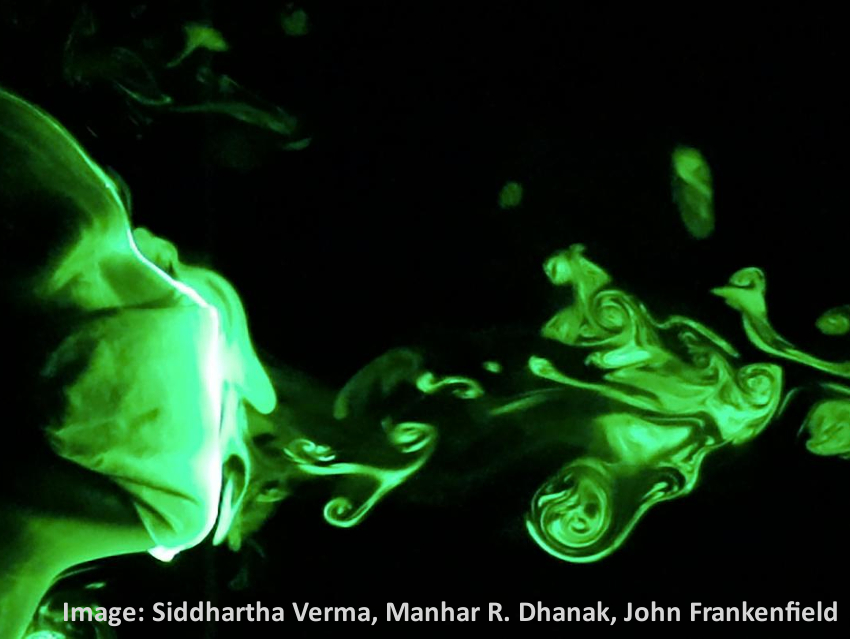The worldwide outbreak of the respiratory disease COVID-19 has led many countries to recommend or require the use of face masks in certain public places. The aim is to limit the spread of potentially infectious respiratory droplets produced during sneezing, coughing, speaking, etc. While medical-grade masks are well-studied, the effectiveness of homemade masks is not completely understood. There is a wide variety of materials, form factors, and single- or multilayered structures, which can all influence the masks’ effectiveness.
Siddhartha Verma and colleagues, Florida Atlantic University, Boca Raton, USA, have created qualitative visualizations of simulated coughs and sneezes to determine how materials and design impact the ability of face masks to slow down or stop respiratory droplets (folded-handkerchief mask pictured as an example). The team used a mannequin head equipped with a fog machine to simulate droplets and a pump to simulate the airflow during coughs or sneezes. To visualize the droplets, they used an off-the-shelf green laser pointer, which was passed through a thin cylindrical rod made of borosilicate glass to create a vertical laser sheet in front of the mannequin head. This allowed the team to visualize a cross-section of the droplets traveling through the air.
The team first visualized the droplets expelled by an uncovered cough and consistently found that some of the droplets traveled further than the 6 ft or 1.5–2 m recommended as a minimum safe distance by many countries. However, most of the larger droplets fall to the ground before traveling this far. Then the same experiment was repeated with different types of homemade masks: folded cotton handkerchief masks, a single-layer bandana-style covering, and a mask sewn from two layers of cotton quilting fabric. They compared the results with a non-sterile, commercially available cone-style mask.
The team found that a bandana-style face covering is not very effective in stopping droplets. The folded-handkerchief mask already reduced the distance the droplets travel forward significantly, but showed noticeable leakage through the mask and at the edges. The two-layered sewn mask stopped the forward movement of the droplets almost completely (down to below 3 in or ca. 8 cm), with some leakage at the edges. The commercial cone-style mask also impeded the droplet flow effectively (down to below 6 in or ca. 15 cm), but did not perform any better than the stitched, two-layered cloth mask. Overall, the researchers conclude that although all non-medical masks tested showed varying degrees of leakage, they are likely to be effective in stopping larger respiratory droplets.
- Visualizing the effectiveness of face masks in obstructing respiratory jets,
Siddhartha Verma, Manhar Dhanak, John Frankenfield,
Phys. Fluids 2020, 32, 061708.
https://doi.org/10.1063/5.0016018
Also of Interest
- Collection: SARS-CoV-2 Virus
What we know about the new coronavirus and COVID-19 - LitCovid
Curated literature hub for tracking up-to-date scientific information about COVID-19 - Many publishers and other entities have signed a joint statement to ensure that COVID-19 research findings and data are shared rapidly and openly


